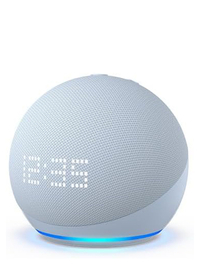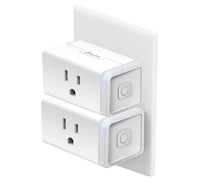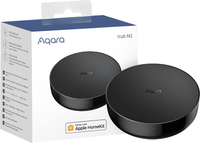How my smart speaker helps me keep my room cool in the summer
I'm using my Echo Dot to monitor my temperatures and automatically turn on my air conditioner when it gets too hot
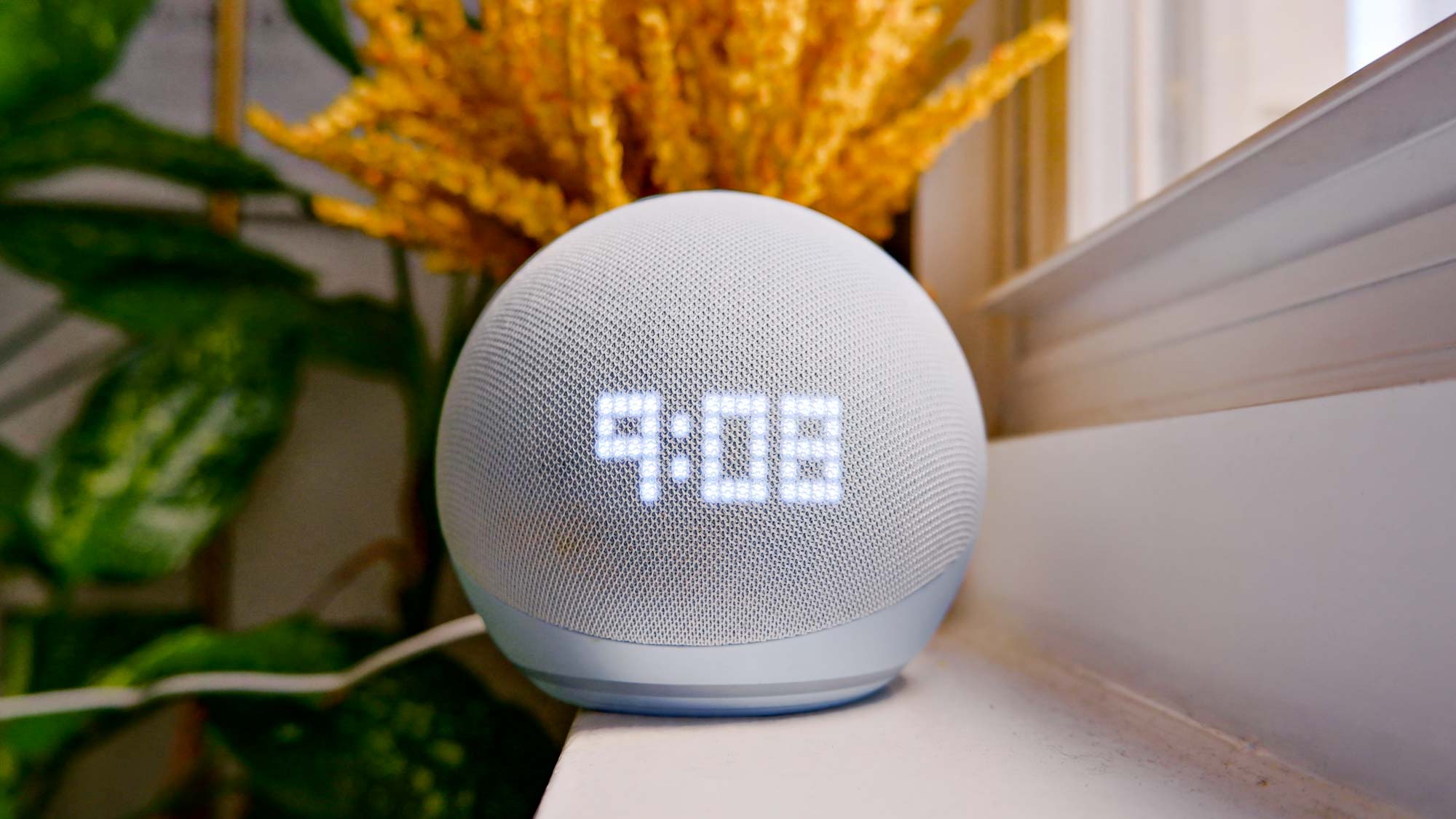
The best smart speakers like the newest Apple HomePod and Echo Dot are more than just great devices for streaming music. They now come with built-in environmental sensors, which can detect and inform you about motion or temperature changes in your room. Connecting this speaker to your smart home platform lets you tap into this additional functionality to trigger the best smart home devices.
A great example of this is setting up a routine that automatically turns on your smart lights when you enter a room. Now that the weather is heating up I'm using my Echo Dot's handy temperature sensor to turn on my old window-mounted air conditioner when it gets too hot. Read on to see how easily I set this routine up to automate your own home to make it more comfortable.
Echo Dot monitors room temperatures
Echo Dot with Clock (5th Gen): now $59 @ Amazon
The 5th Gen Echo Dot with Clock is a stellar value at $59. It's sphere shape produces rich, room-filling sound with a built-in LED display to show information like time, temperature, and song titles. But the real star of the show is its smart temperature sensor—something that can cost around $30 on its own. Plus my Echo Dot acts as Wi-FI extender for my Eero mesh system so it's a no-brainer for my household.
This compact 11-ounce sphere is worth its weight in gold. I use it as my assistant to brief me about my day in the morning, control my smart home devices, and keep an eye on my room's exact temperature. Its sensor can detect when my room is too warm and automatically kicks on my ancient Frigidaire air conditioner.
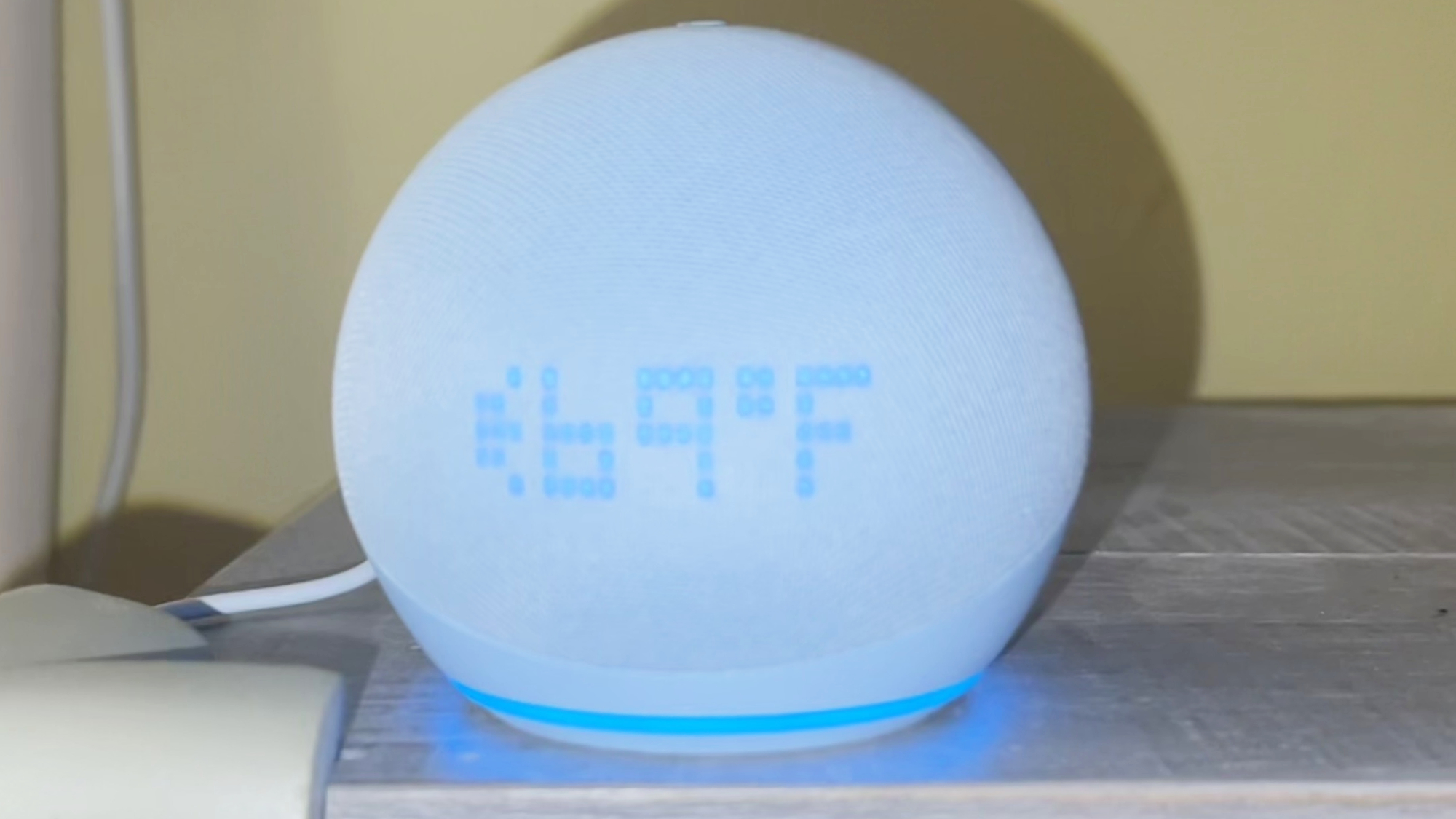
I did this by setting the condition when my room gets too hot (above 70 degrees) to power on the smart plug connected to my air conditioner. Essentially my Echo Dot constantly checks the temperatures and relays that my air conditioner needs to power on when it's too hot. This is a godsend of a workaround for my older house which lacks central air or a smart thermostat. But you can still benefit from this setup for specific rooms if you have a portable air conditioner or window unit.
Smart plug controls my A/C
Kasa Matter Smart Plug w/ Energy Monitoring (2-Pack): was $40 now $23 @ Amazon
Kasa's compact smart plug plays nice with all of the major smart home platforms including Apple HomeKit, Amazon Alexa, Google Home, and Samsung Smart Things. This seamless integration provides routines, easy touch controls, and voice commands. You can use it with things beyond your air conditioner like lamps, fans, or even your coffee maker.
Just plug your air conditioner into one of the best smart plugs to turn it on or off from anywhere. You can use your smart home's Routine menu to create a slick automation. Set the "When" (trigger) portion of the routine to when your smart speaker temperature sensor reaches what you consider too high. Next you'll make the "Then" (action ) result in powering on your smart plug to make your space more comfortable.
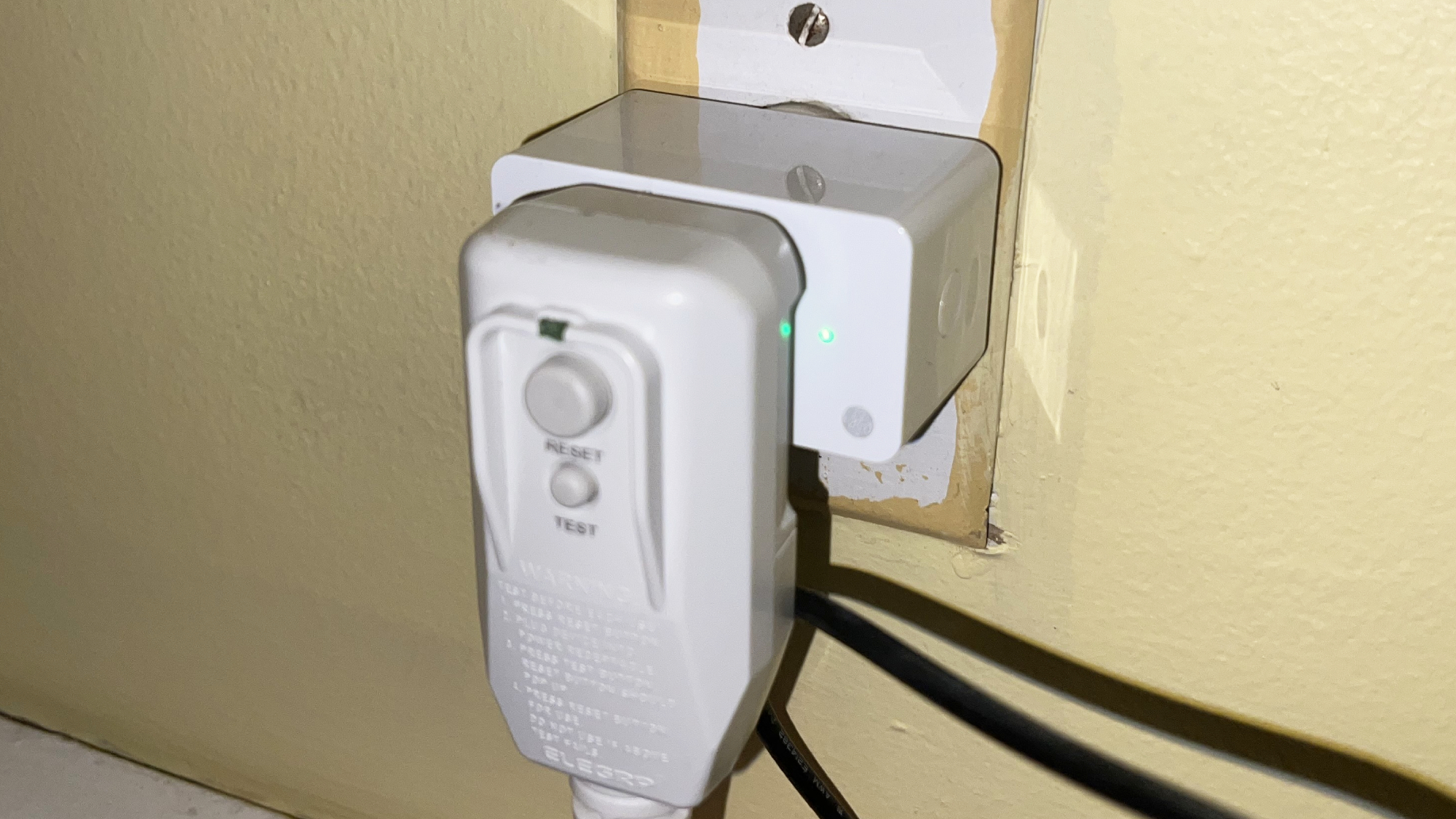
Keep in mind that a smart plug simply kills power flowing to the device. Not every A/C can return to its operation settings after shutting down. Smart plugs lack onboard memory to remember device settings which is one of my biggest problems with smart plugs. I've had success with models as old as 8 years old remembering I keep my room at 66 degrees on a high cool mode. But older models may turn on and sit waiting for your manual input.
Alternative: map your remote control to an IR blaster
Aqara Smart Hub M2: was $64 now $49 @ Amazon
I use Aqara's compact smart home hub to connect to my Zigbee devices. But its most useful feature is its onboard 360-degree Infrared blaster which lets you program old IR remote controls to your smart home.
Smart plugs aren't going to work in every scenario. If you have a ductless air conditioning system or can't use your A/C's prong with a smart plug, there's still hope. That's assuming that your existing setup has a remote. You can program a wireless remote's inputs into an IR blaster.
Sign up to get the BEST of Tom's Guide direct to your inbox.
Get instant access to breaking news, the hottest reviews, great deals and helpful tips.
This device stores the distinct signal of each button press like power on, temperature up, or mode change. You can then use a phone app to control the A/C while away from home, with your voice, or simply schedule your system to turn on at specific times or temperatures.
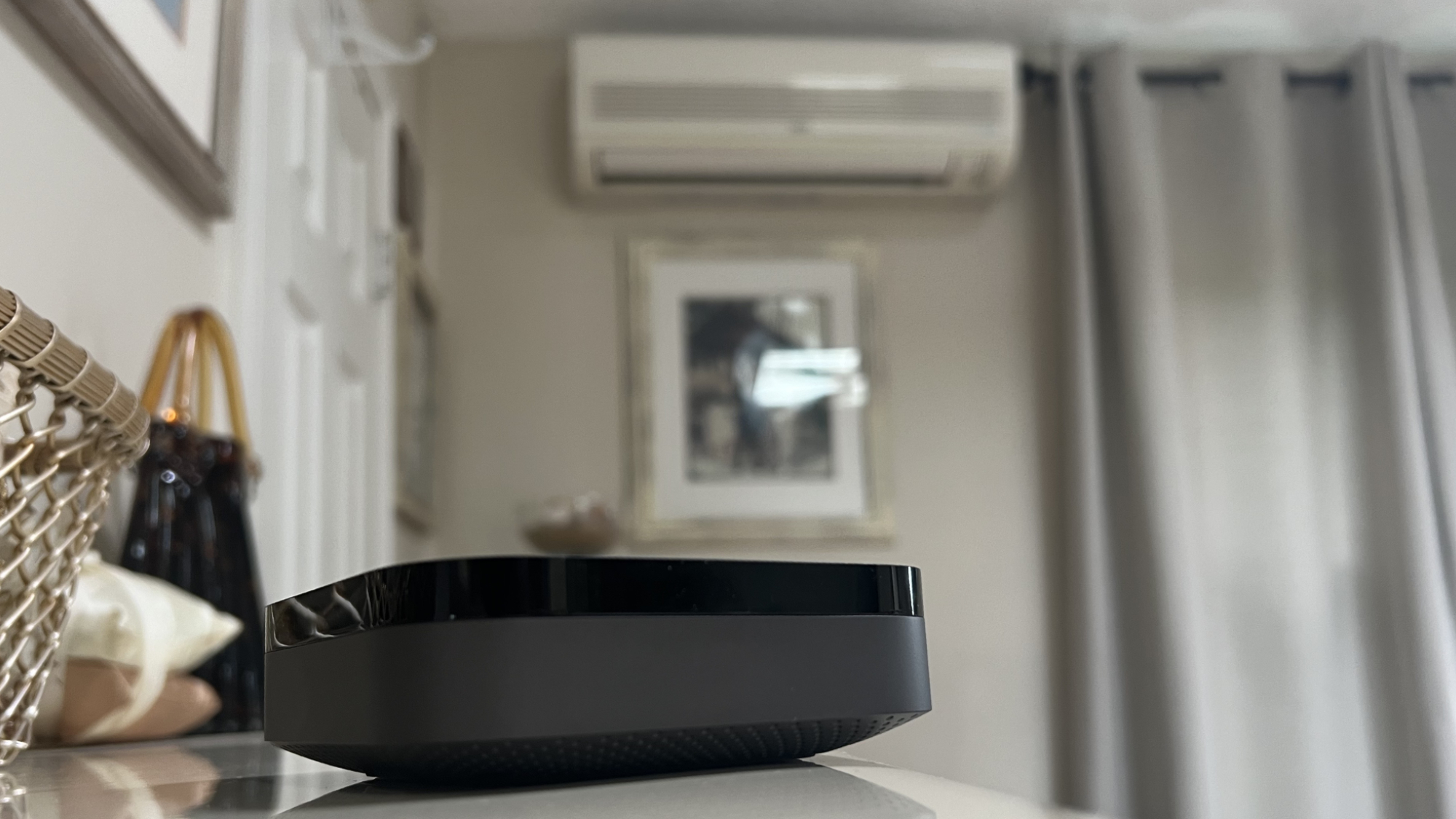
For those of you like me living in an older house or somewhere that lacks central air like a garage or basement apartment, this is a much cheaper solution to buying a smart air conditioner, especially so if you already have an existing window or portable air conditioning unit.
More from Tom's Guide

Hunter Fenollol is a Senior Editor for Tom’s Guide. He specializes in smart home gadgets and appliances. Prior to joining the team, Hunter reviewed computers, wearables, and mixed reality gear for publications that include CNN Underscored, Popular Mechanics, and Laptop Magazine. When he’s not testing out the latest cooking gadgets, you can likely find him playing a round of golf or out with friends feeding his paycheck to a QuickHit slot machine. Hunter started his career as an intern at Tom’s Guide back in 2019 while in college. He graduated from Long Island University Post with a degree in Communications and minor in Advertising. He has been vlogging ever since the iPhone 4 took front-facing cameras mainstream.
